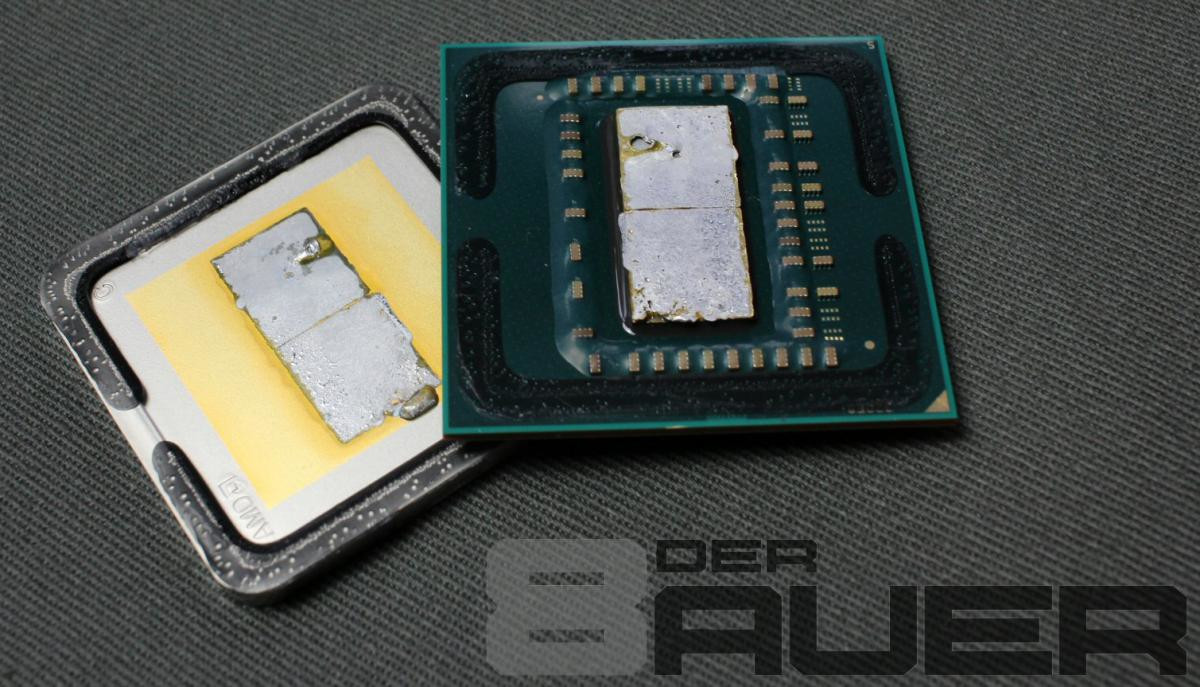Direct-to-Die Cooling: The Future of CPU Temperature Control?

When it comes to modern gaming CPUs, temperature has become one of the biggest performance limiters. As chips like AMD’s Ryzen 9 9950X and Intel’s Core Ultra 9 285K hit astonishing clock speeds and power densities, even large coolers and thick cold plates are struggling to keep up.
Enter Direct-to-Die cooling. Once an extreme mod reserved for hardcore overclockers, it’s now gaining traction as a legitimate next step in thermal performance. But what exactly is it, and is it really worth the risk?
What Is Direct-to-Die Cooling?
Normally, your CPU’s Integrated Heat Spreader (IHS) acts as a protective metal lid. It distributes heat from the chip’s silicon die to your cooler’s cold plate using a layer of thermal paste and solder.
In a Direct-to-Die setup, that heat spreader is completely removed (a process called delidding). The cooler or water block then makes direct contact with the silicon die, eliminating thermal transfer layers that slow down heat movement.
This means fewer barriers between the heat source and your cooler — and that’s crucial when CPUs are producing more watts per square millimeter than ever before.
Why It Matters in 2025
Modern processors are increasingly thermally dense. Instead of making the dies larger, manufacturers are stacking more transistors in smaller spaces. This makes heat harder to remove efficiently.
For example, the Ryzen 9 9950X has 16 cores packed into chiplets that can spike to over 95°C under load, even with a large AIO. Intel’s Ultra series behaves similarly, often hitting thermal limits before electrical ones.
Direct-to-Die cooling improves this situation dramatically. By removing the IHS and reducing the thermal resistance, temperatures can drop by 10–20°C, allowing higher boost clocks or quieter operation.
The Technical Side: How It Works
A Direct-to-Die system typically requires:
- Delidding Tool: Used to safely remove the IHS without damaging the fragile silicon die or the substrate.
- Contact Frame or Mounting Kit: These maintain proper pressure between the die and the cooler, replacing the function of the IHS.
- Liquid Metal or High-Performance Paste: Applied directly to the die to maximize heat transfer.
- Custom Water Block or Adapter: Many coolers need a modified cold plate to ensure even pressure distribution.
Because you’re removing protective layers, every micron of spacing and pressure matters. Uneven contact can chip the die or cause short circuits if liquid metal spreads beyond its target area. It’s not a beginner-friendly upgrade.
Real-World Benefits
When done correctly, Direct-to-Die cooling can yield several measurable improvements:
- Lower Peak Temperatures: Reductions of 10°C or more are common.
- Sustained Boost Clocks: CPUs maintain higher frequencies longer before thermal throttling.
- Reduced Noise: Fans and pumps don’t need to work as hard to keep things cool.
- Improved Thermal Efficiency: Less wasted power from high heat levels.
However, these benefits depend heavily on precision, materials, and skill. A poorly executed delid can instantly ruin a £700 processor.
The Drawbacks and Risks
While it offers impressive gains, Direct-to-Die cooling has clear downsides:
- Void Warranty: Removing the IHS voids manufacturer warranties immediately.
- Installation Complexity: It requires near-perfect mounting pressure and thermal application.
- Compatibility Issues: Many AIOs and air coolers are not designed for direct contact with the silicon.
- Physical Fragility: The die is exposed and can crack under uneven force.
For these reasons, Direct-to-Die is still best left to experienced builders or professionals with the right tools and steady hands.
What About Liquid Metal?
Direct-to-Die setups often use liquid metal instead of traditional paste because of its superior thermal conductivity. It conducts heat extremely well but is also electrically conductive, meaning a single droplet in the wrong place can short your CPU or motherboard.
Some enthusiasts apply protective coatings or use barriers to mitigate the risk, but it remains a high-maintenance solution. It’s effective, but it demands respect.
Is It Worth It?
If you’re a serious overclocker or someone chasing absolute silence, the answer might be yes. The temperature reduction and performance consistency can be impressive.
However, for most gamers and builders, a high-quality AIO or premium air cooler is still the safer and more practical choice. The performance difference is often marginal in real-world gaming, where GPUs are usually the thermal bottleneck.
The Future: Direct-to-Die Ready CPUs?
We may see motherboard and cooler manufacturers embracing Direct-to-Die mounting more formally in the coming years.
There are already hints of this. Some water-cooling companies are developing blocks designed to sit directly on the silicon die without modification, and AMD has been researching new packaging that could make the IHS optional.
If that happens, Direct-to-Die could move from being a niche enthusiast mod to a mainstream cooling solution — improving thermals without the risks of DIY delidding.
Final Thoughts
Direct-to-Die cooling represents both the future and the fringe of PC cooling. It’s a reminder of how far we’ll go to push performance limits, but also how delicate and risky that edge can be.
For most gamers, it’s a fascinating innovation to watch rather than attempt. But if manufacturers start building CPUs and coolers designed for it, we could see a new era of efficient, compact, and whisper-quiet gaming systems.
Clarification - Gamertech do not do direct-to-die solutions and it definitely will invalidate your warranty if you attempt to do so with your PC.
Tarl @ Gamertech

